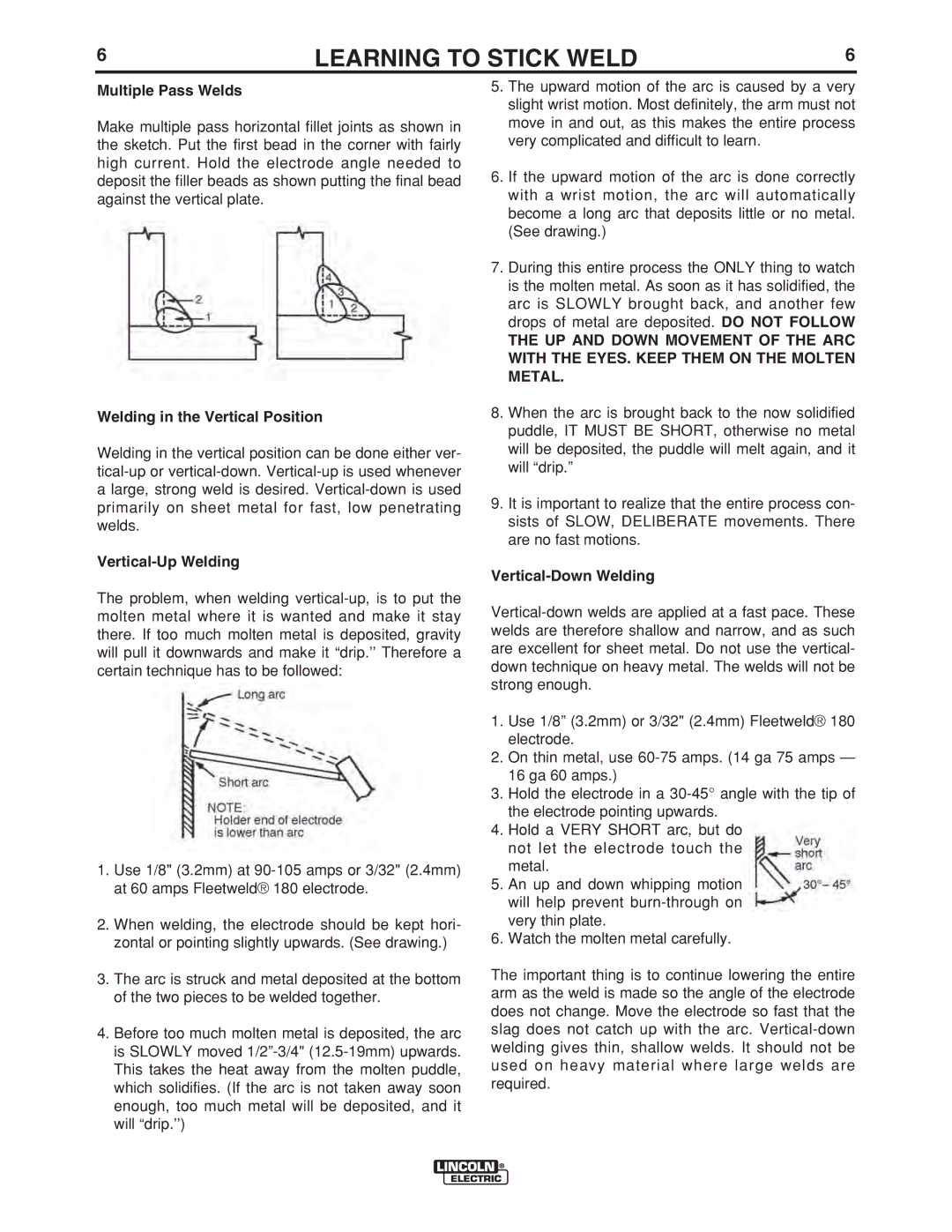
6 | LEARNING TO STICK WELD | 6 |
Multiple Pass Welds
Make multiple pass horizontal fillet joints as shown in the sketch. Put the first bead in the corner with fairly high current. Hold the electrode angle needed to deposit the filler beads as shown putting the final bead against the vertical plate.
Welding in the Vertical Position
Welding in the vertical position can be done either ver-
Vertical-Up Welding
The problem, when welding
1.Use 1/8" (3.2mm) at
2.When welding, the electrode should be kept hori- zontal or pointing slightly upwards. (See drawing.)
3.The arc is struck and metal deposited at the bottom of the two pieces to be welded together.
4.Before too much molten metal is deposited, the arc is SLOWLY moved
5.The upward motion of the arc is caused by a very slight wrist motion. Most definitely, the arm must not move in and out, as this makes the entire process very complicated and difficult to learn.
6.If the upward motion of the arc is done correctly with a wrist motion, the arc will automatically become a long arc that deposits little or no metal. (See drawing.)
7.During this entire process the ONLY thing to watch is the molten metal. As soon as it has solidified, the arc is SLOWLY brought back, and another few drops of metal are deposited. DO NOT FOLLOW
THE UP AND DOWN MOVEMENT OF THE ARC WITH THE EYES. KEEP THEM ON THE MOLTEN METAL.
8.When the arc is brought back to the now solidified puddle, IT MUST BE SHORT, otherwise no metal will be deposited, the puddle will melt again, and it will “drip.”
9.It is important to realize that the entire process con- sists of SLOW, DELIBERATE movements. There are no fast motions.
Vertical-Down Welding
1.Use 1/8” (3.2mm) or 3/32" (2.4mm) Fleetweld® 180 electrode.
2.On thin metal, use
3.Hold the electrode in a
4.Hold a VERY SHORT arc, but do not let the electrode touch the metal.
5.An up and down whipping motion will help prevent
6.Watch the molten metal carefully.
The important thing is to continue lowering the entire arm as the weld is made so the angle of the electrode does not change. Move the electrode so fast that the slag does not catch up with the arc.
